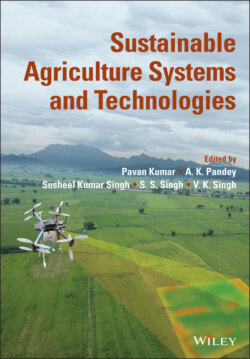Читать книгу Sustainable Agriculture Systems and Technologies - Группа авторов - Страница 45
3.2 Materials and Methods 3.2.1 Effect of TMR on Milk Yield and Nutrients Digestibility in Crossbred Cows
ОглавлениеAnnual cereal and legume fodders were grown during rainy and winter season under irrigated system at ICAR Research Complex for Eastern Region, Patna, under subtropical hot and humid climate. The soils were neutral in pH and alluvial‐clay in nature. Multicut sorghum as cereal and rice bean as legume were grown during rainy season. Whereas, oat as cereal and berseem as legume fodder were grown during winter season on the same land on relay system. To study the effect on milk production and nutrient digestibility in first lactating crossbred cows, two feeding experiments were conducted for 60 days duration each during rainy and winter seasons on TMR. In experiment‐I, six cows were distributed into two groups having three cows in each group. For preparation of TMR, wheat straw 2 kg, chapped green forages (multicut sorghum 25 kg and rice bean 2 kg) 27 kg, and concentrate feed (17% dietary CP) 5 kg were mixed together with little water to make sani. The above TMR was offered to each cow of T1 group daily in dividing doses i.e. morning and evening. The cows of group T2 were fed the same quantity of above feed ingredients separately. At first, wheat straw and concentrate feed was offered after mixing with water and then a gap of one to two hours un‐chapped green forages were fed. A total of 10.68 kg dry matter (DM) per day per head was provided to both the groups. Similarly, experiment‐II was conducted in six cows following previous feeding and management schedule. During winter season, however, wheat straw 2 kg, chapped green forages (oat 15 kg and berseem 16 kg) 31 kg and concentrate feed (16.5% dietary CP) 4.5 kg constituted the TMR. Total 11.28 kg DM per day per head was provided to the cows in both the groups. At the end of the feeding experiment, a digestion trial of five‐day duration was conducted in both the experiments. Feed offered, residues and feces were collected daily for DM and CP estimation (AOAC 2005). The dry matter intake (DMI) per 100 kg body weight was calculated. The gross energy (GE) was determined in pooled dry samples. The digestibility of DM and CP, digestible energy (DE) values were calculated and analyzed statistically (Snedecor and Cochran 1994).
